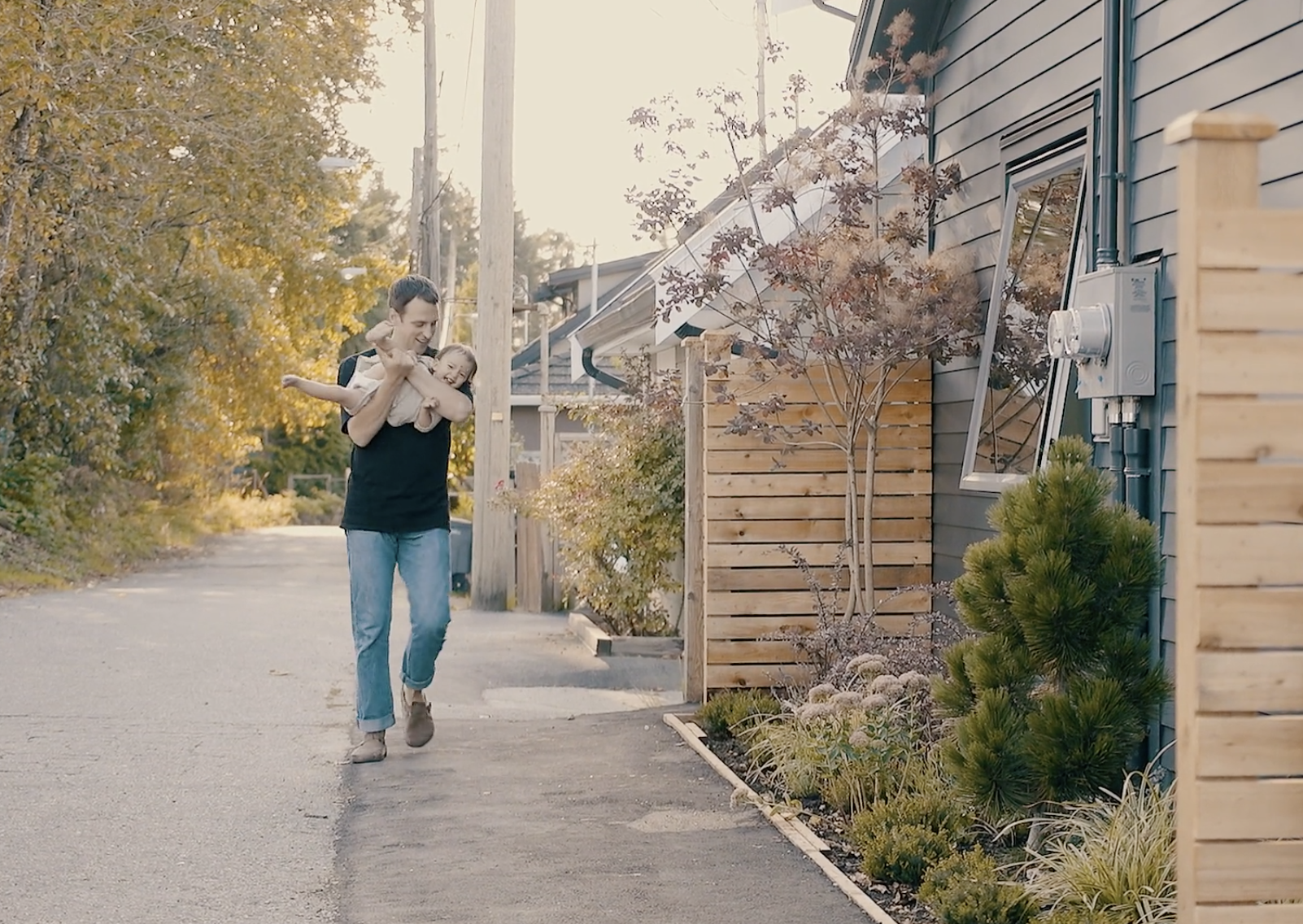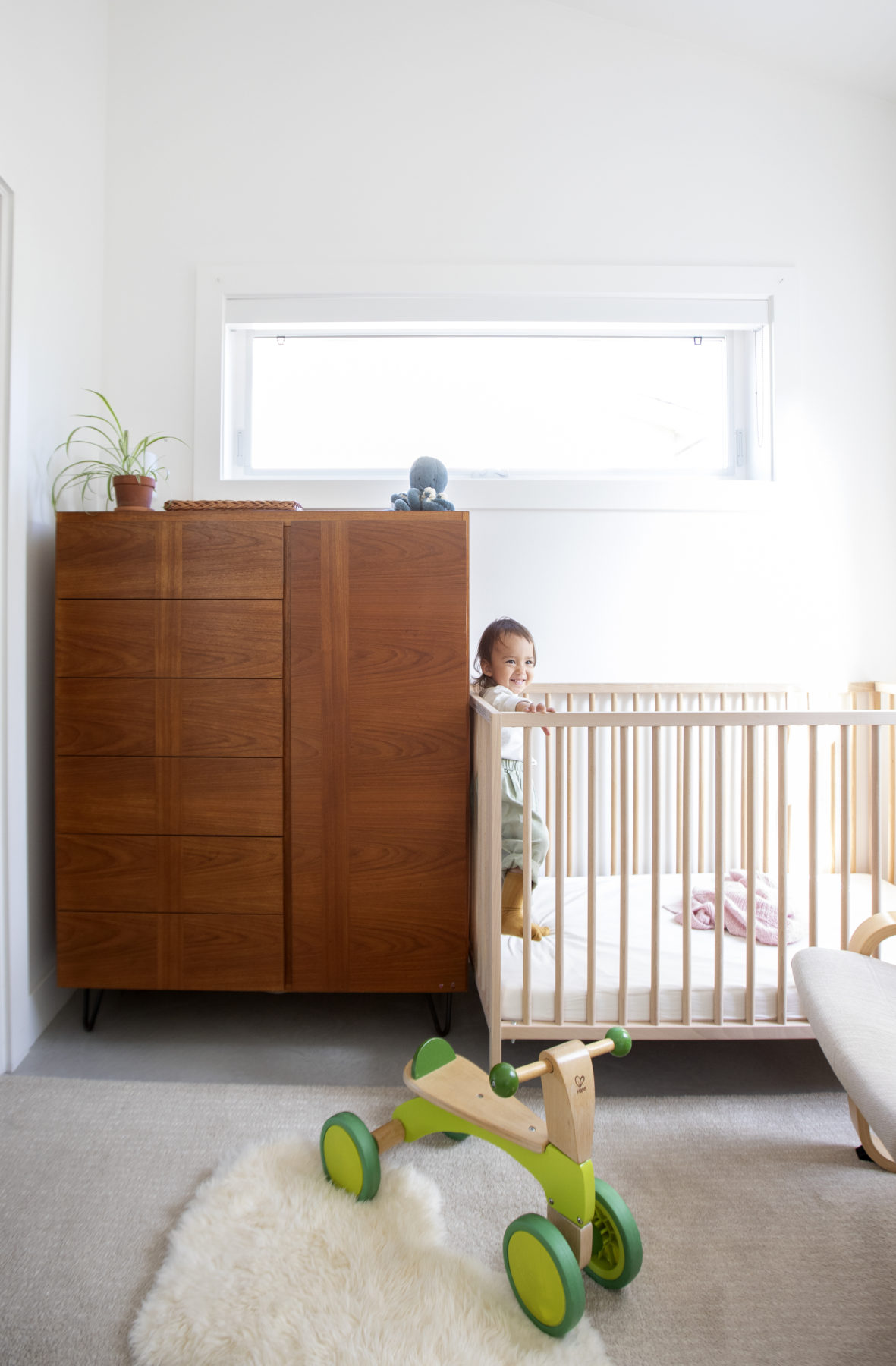Multigenerational Living

Big life milestones have a way of sneaking up on us.
I have a 4 year old daughter (pictured below in our Moody Little Bungalow) and we have another child on the way. The last few years have been busy, and I went from “affluent bachelor” to “scrambling for housing new dad” in about 5 minutes.
The reality of starting a family was a total blur. And now with our second child joining the family, I can’t help but reflect on what the future holds for my children, parents, and eventually, me!
In 2017, our family was faced with my grandmother having a stroke and a fall. As she had already downsized to a small condo in the westend, we now had find suitable assisted living arrangements for her. The result was a massive wait time, and unbelievable ongoing expenses. For some facilities, costs can be around $6,000 monthly.
“If only we could build her a laneway house”
While we were navigating this situation, I kept wrestling with “If only we could build her a laneway house” thoughts that kept bubbling (rather unhelpfully) to the surface of my mind. This likely due in large part to the fact that I had recently been working on a dreamy laneway house for an aging parent of a client (the house is located here if you’re curious). These thoughts were unhelpful because my family doesn’t own property in Vancouver, but they convinced me of something: If you have the option of building a laneway house instead of navigating the long term care facility quagmire, you should.
Heres Why:
- The wait times are similar: We waited 18 months for a bed to open up for my Gran. A laneway house can be move in ready in 20 – 24 months from engaging the services of an architect or builder to commence the process.
- They make a ton of cents: Instead of
wastingspending $6,000 a month on the care facility, you could be investing $2,500 a month into the value of your property. This obviously will hugely depend on the level of care required, and interest rates… but still! Even if you were to add in the services of Nurse Next Door or another home care provider, there is almost no way that this equation doesn’t favour a laneway home. - Quality of Life: Lastly and most importantly, aging in place in a laneway house offers a superior quality to the autumn years. I’m not trying to evoke too much emotion here, but my heart literally broke the day I used the kitchen facilities (booked a month in advance) at my Gran’s care home to make her some garlic prawns and pasta. It was a moment of living together that we just can’t replicate from awkward visits. The quality of life and simply being together just isn’t the same in care facility. I could go on and on here, but I can tell you one thing for sure: I hope and pray that I am in the position to be teasing my kids about their ignorance of gardening in our shared courtyard when I come of that age.
I implore anyone reading this far: even if you don’t select Smallworks as your designer / builder for your laneway house, please consider the laneway house format for your parents, or for yourself. There are so many ways this could prove a more effective aging strategy than the more traditional approach. For my part, I will be doing this so that when I pass on, the cottage I leave behind will be an income generating asset, rather than a hole in my family’s wallet. And I’m probably going to have a lot more fun this way too…
If you’d like to know more – please don’t hesitate to fill out the form below and get in touch with us.
Robbie

